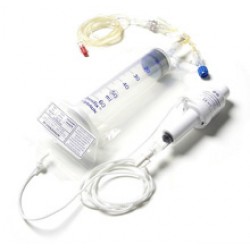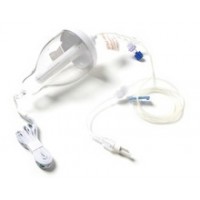The PCIA is a non-electronic, patient activated disposable pump designed to deliver intravenous analgesia on demand and offers safety, ease of use, portability and as distinct advantages when compared with electronically controlled delivery devices.
The Patient Controlled Intravenous Analgesic (PCIA) Device is designed to make 0.5mL analgesic boluses available to the patient every 5 minutes, hence allowing the patient to inject a maximum dose of 6mL per hour via an intravenous catheter. The PCIA is ideal for patients who require post-operative pain relief and are able to operate the device unattended. The device is lightweight and may be worn around the neck hence providing excellent mobility. Given that it is non-electronic, the device eliminates the need for pump programming. Human error is reduced and staff training is made easier. The affordability of this PCIA makes this form of pain management available to all patients.
| Caracteristicas | |
| Caracteristicas | Product History In 1996 a need was identified by Dr. George O’Neil from King Edward Hospital for a patient controlled analgesia (PCA) device that would be safe, easy to use, affordable and would permit full patient mobility. At that time, PCA devices available in the market were electronically controlled mechanical systems that were expensive, relatively complicated to operate, prohibited patient mobility, and presented the risk of inadvertent analgesic download due to operator error or control system failure. Indications Patients requiring postoperative pain breakthrough pain relief Contraindications The following conditions would preclude use of the PCIA: Infusion volumes / rates to be printed or stored in memory Adjustable infusion rate settings and profiles required (e.g. if continuous background infusion is required) Infusion volume accuracy greater than 80% required Patients who are assessed as being at risk of illicit drug seeking behaviour and may tamper with the PCIA Patients who are unable to self-administer analgesia Patients who are unable to understand the intended use or instructions for the device Audio and visual alarm system required to alert clinicians of device status (e.g. low reservoir volume / occluded line / loss of system pressure) Printed or stored record of infusion volumes required |



